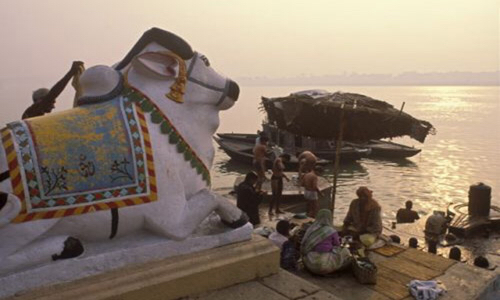The history of India is a story of cities, the rise and fall of urbanization. But the story of cities is not told in interesting ways in our history books. The ‘utopia’ of Gram Swaraj did not let people and policymakers to embrace cities and solve their problems. However, since the post-economic liberalization period, the story of cities has really begun in the country. In the upcoming decades, many cities will rise to prominence and many would fall. If we look at history as urban creatures, human civilization is all about urbanization and de-urbanization. Whenever human progress moved in forward way, cities rose to prominence. Be it Indus Valley civilization or the great Gupta Empire period which is considered the golden age of India, urbanization was of one of the central themes in all these great civilizations.
Gaya, the second largest city in the state of Bihar and capital of Magadh division has been transformed under National Heritage City Development and Augmentation Yojana (HRIDAY) scheme of Modi government. The city is very important for Dharmic religions (Hinduism, Jainism, and Buddhism) and is mentioned in Ramayan (spelling mistake is intentional) and Mahabharat. This is the place where Buddha reached enlightenment and Bhagvan Ram offered Pin-daan of father Dasharath. It is one of the four sacred places in Buddhism and Mahabodhi Temple Complex is located here. The city was allocated fund of 40.04 crore rupees under the HRDAY scheme of which was started in 2015.
The Modi government identified 12 cities (Ajmer, Amaravati, Amritsar, Badami, Dwarka, Gaya, Kanchipuram, Mathura, Puri, Varanasi, Velankanni and Warangal) and allotted 500 crore rupees for their rejuvenation. The state governments were also asked to allocate funds for cities of religious and historical importance. “Under the icon site development scheme, the central government allots the selected sites for development and beautification to its corporate houses. These corporates bear the cost, while the project is made by the administration of the respective place. Indian Oil Corporation Limited has been selected for Gaya’s Vishnupad and Surajkund. We have prepared a project and sent it to the central government for approval,” said Gaya Municipal commissioner Vijay Kumar.
For India, the 21st century will be the century of urbanization. The numbers of people that are moving from villages to cities to look for new opportunities are growing exponentially. The cities offer a much better quality of life in terms of education, jobs, information, and social empowerment. The developing countries of the world like India, China, and Brazil are urbanizing rapidly. People in villages have limited employment opportunities like agriculture and small businesses, but agriculture cannot sustain a large section of the population because productivity is very low.
The urban development schemes launched by Modi government are Smart City Mission under which 100 cities across India were chosen to be empowered technologically, economically and socially. Another scheme is Housing For All, which is to provide affordable housing to eligible weaker section, and low-income groups by 2022. The Atal Mission for Rejuvenation and Urban Transformation (AMRUT) was also launched by Modi government in 2015 to build urban infrastructure like sewage networks, and water supply in cities. There is a growing appetite among Indian people to live in urban areas equipped with cutting edge technology and state of the art infrastructure. The exponential growth of urbanization indicates that Indian civilization is flourishing once again. This civilization has seen many rises and falls and the future is expected to be the same. Let’s hope that this cycle of growth and urbanization lasts long.


































